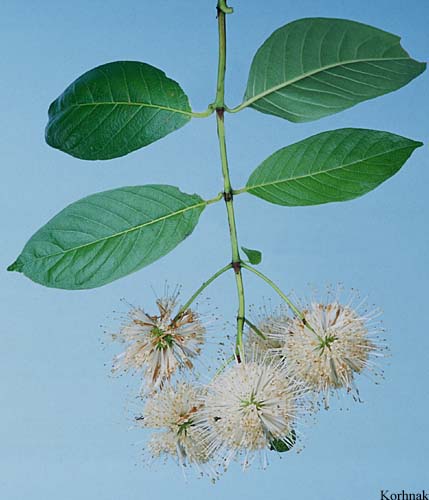BUTTONBUSH
Tilia americana
Family: Rubiaceae
Natural History
 Opposite leaves and spherical flower clusters of buttonbush - Photo credit: Larry Korhnak, University of Florida
Opposite leaves and spherical flower clusters of buttonbush - Photo credit: Larry Korhnak, University of Florida
Buttonbush is abundant in low lands, sometimes becoming large thickets. It can be a bothersome plant for landowners near or in wetlands. It has a wide range, extending from southeastern Canada and Minnesota through the eastern U.S. to Texas and Cuba, Several varieties also occur in the Southwest and Mexico. This wide range reflects the capacity of buttonbush to tolerate a variety of environmental conditions.
It is not commercially valuable, but buttonbush does make a nice ornamental because of its attractive flowers.
On low-lying pasturelands, buttonbush can be harmful because its foliage is poisonous to cattle. Many birds and other wildlife use the dense thickets of buttonbush for cover and nesting. Ducks and songbirds enjoy the nutlets of the round clusters of maroon-colored fruit.
Buttonbush is easily recognized by its simple leaves, opposite leaf arrangement, and spherical flower heads occurring in clusters of two or more. The many tiny flowers bloom throughout the summer.
